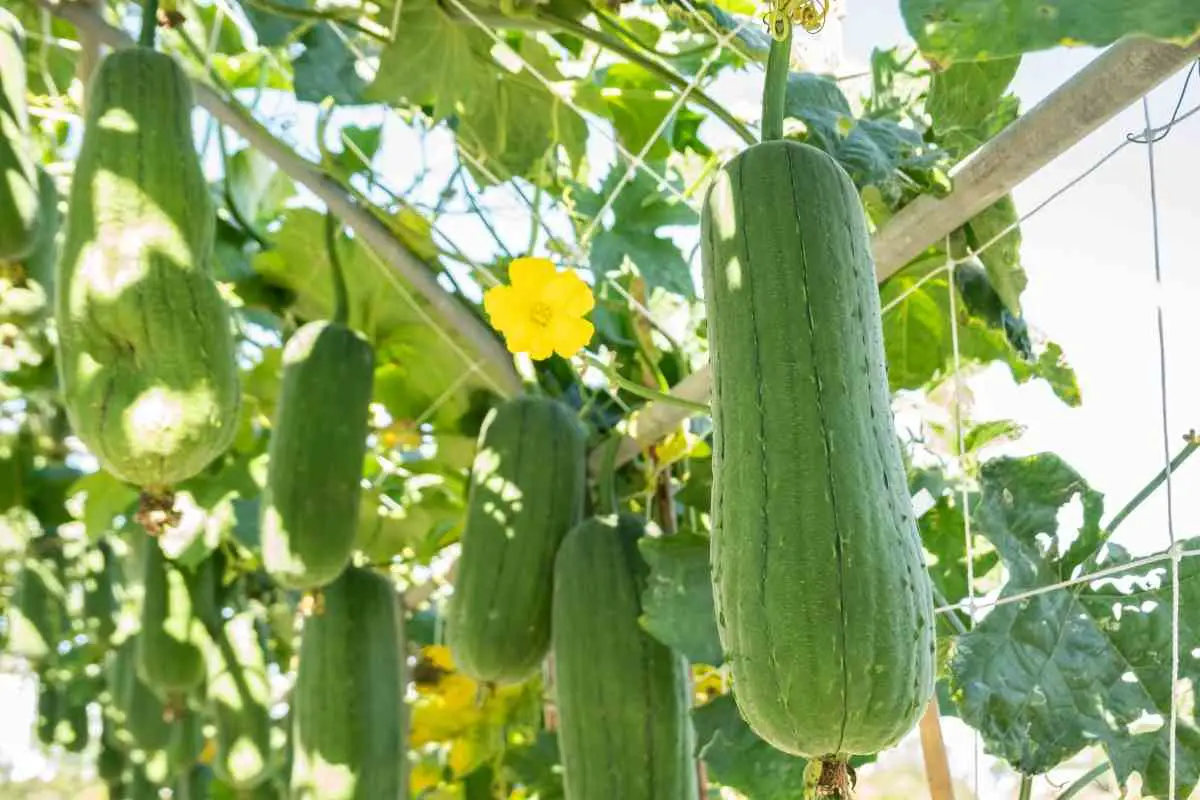Patola is the Philippine name for a green gourd that can be cultivated as food or cut and dried to become a luxurious luffa sponge, so either way, it’s a pretty useful plant to have around.
In Asia, it is cultivated commercially on plantations, but you can grow it at home in the garden or in containers.
In This Grower’s Guide – We will take a look at how to grow Patola as a food or for its body sponges. If you get some productive Patola plants going, we also share some delicious Asian recipes that you can enjoy.
What is Patola?
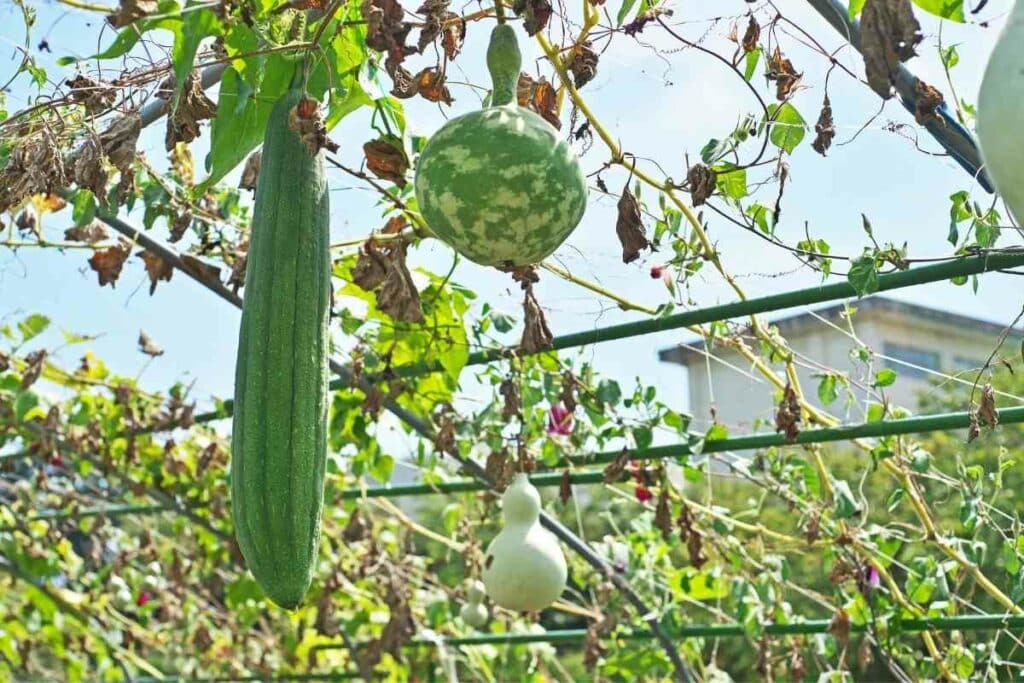
Well, depending on where you are in the world (and how you use it) you may know this quirky plant as:
- Luffa
- Loofah
- Sponge gourd
- Gilki
- Chinese okra
- Egyptian Cucumber
- Vietnamese Luffa
- Rag Gourd
- Dishrag Gourd
Patola’s botanical name is Luffa cylindrica and it is gourd-producing in the same family as courgettes, cucumbers, and squash.
The ripe gourd can also be eaten in a range of Asian and Southeast Asian dishes.
Where can I grow Patola?
Though this vine hails from the Asian tropics, it is able to be successfully grown in more temperate climates.
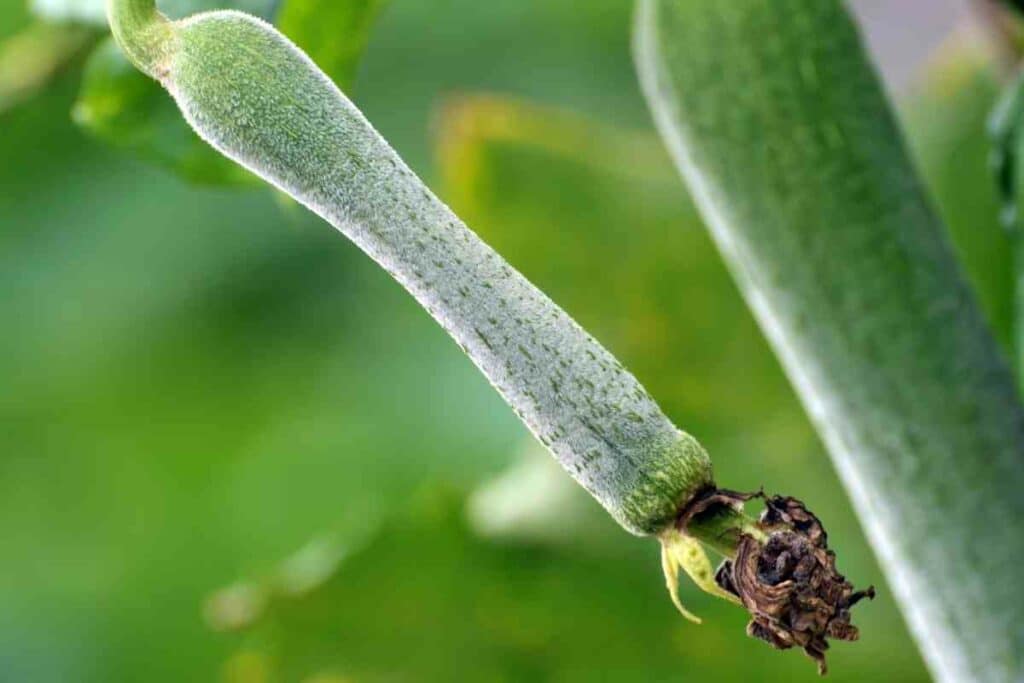
However, it does not tolerate cold well and will simply shut down its growth for weeks if temperatures dip.
If you want to grow Patola outdoors, you will need to grow in a USDA plant hardiness zone of 7 or higher.
With indoor planting or using a container or glasshouse, you may be able to grow it to fruit in zone 6 or even zone 5.
How to grow Patola
This is a rare and exotic plant in the West and is most often started from seed.
Buy Patola seeds from garden centers or specialist online retailers.
Your Choice – You can grow Patola in containers, but if your climate is ideal, it can also be sown directly.
Preparing Patola seeds
The patola seeds need to be prepared for germination.
You can do this by scratching and thinning the seed wall with sandpaper. Then the seeds can be soaked in clean water for 24 hours.
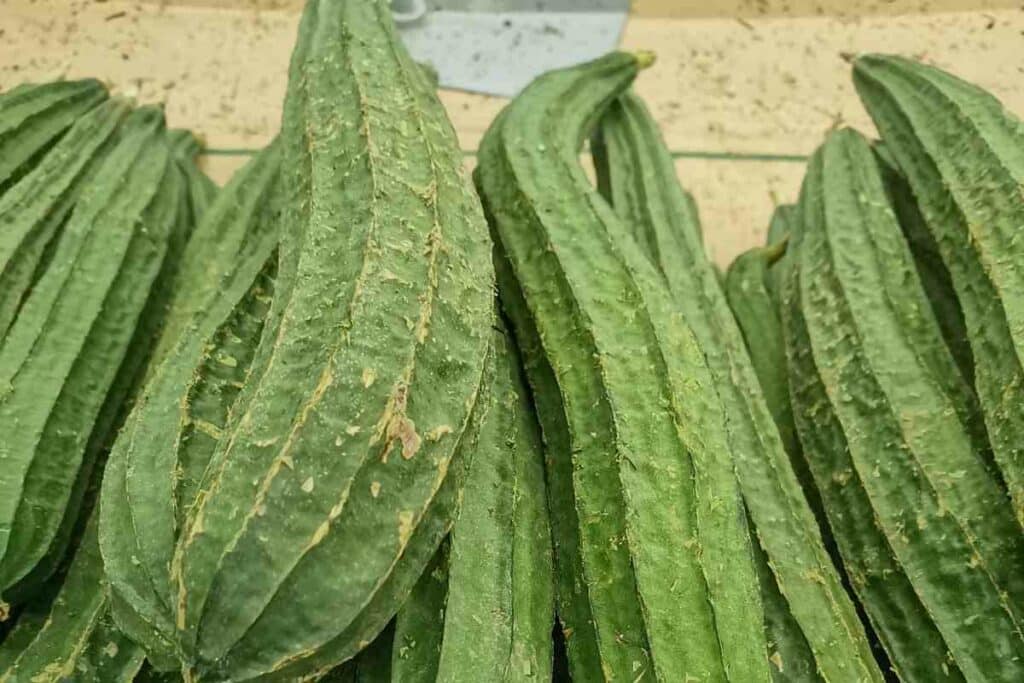
Sowing Patola
Use your finger or a dibber to make a one-inch diameter hole to plant individual seeds.
Cover the seed with potting compost and give a good watering to start them off.
Keep the soil moist and you should expect germination within 4 to 10 days.
Growing Patola in a container
To grow edible patola, you’ll need a large container filled with rich, nourishing compost.
The ideal container for growing Patola should be deep and wide, at least 12 inches in each dimension.
Terracotta is a great material for growing these sun-loving plants as it really retains the heat and warmth your Patola will love.
Drainage is essential so choose a pot with drainage holes and add some gravel or stones at the bottom.
Patola outdoor growing conditions
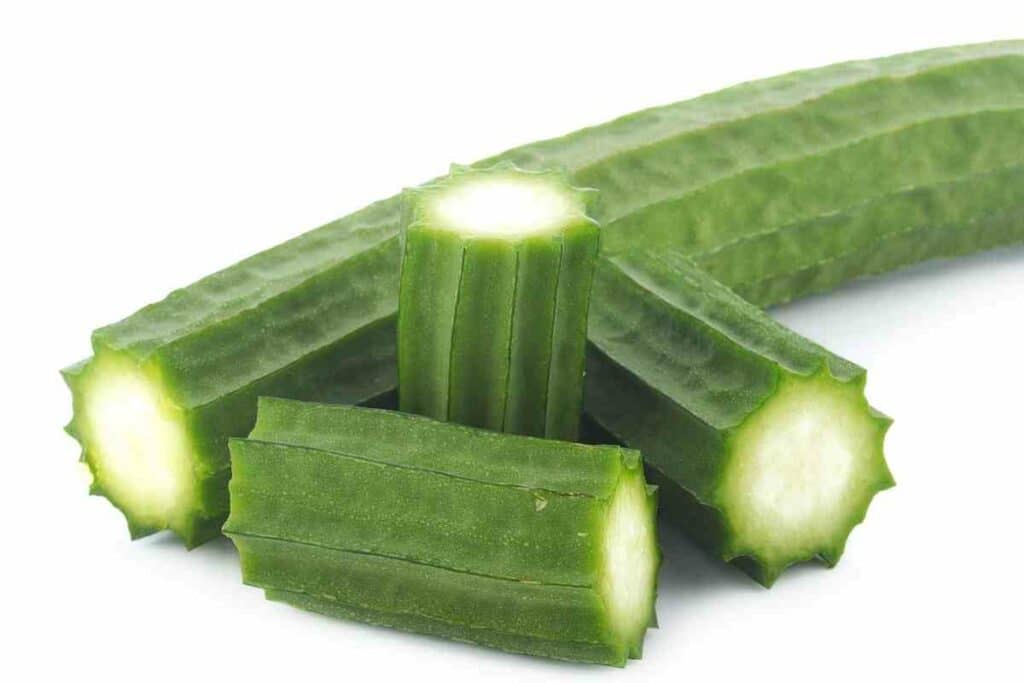
Warmth
Warmth is a must for these tropical plants.
This is why container growing is a very effective way of maintaining the warmth that these plants need to thrive.
Works Best – A sunny spot on a patio is ideal. Ensure that your growing Patola gets at least 6 hours of sunlight daily.
Soil quality
If you sow direct or transplant Patola plants, ensure your soil is prepped with a rich layer of manure or compost.
This plant benefits from loamy soils that are well-drained and have a neutral pH. For plants grown in pots, a good-quality multi-purpose compost should be used.
Watering
Watering does not have to be done daily, but the soil should be kept moist at all times.
Ensure that container plants have good drainage. Mulching can also help your plants retain the moisture they need and suppress weeds.
Support
Your Patola will also need robust support so the vine can climb as it develops.
Use trellis, pergolas, arbors, or frames to give the gourd the structure it needs.
You may need a large structure because vines can be as long as 30 feet (9.1 metres).
Feeding
Feed your Patolas with a slow-release fertilizer, or add a dilute liquid fertilizer to feeds.
Demand for nutrients will increase once it starts to flower. You can add more well-rotted manure to support them while they fruit.
Pruning
This vigorous fine needs decisive pruning to ensure that the growth is directed towards flowering and fruiting rather than an excessive length.
Remember This – Prune it regularly as it grows quickly. Remove damaged or dying stems or leaves or growth that is growing the plant.
Patola pests and diseases to watch out for
Patola plants are susceptible to a number of gourd diseases.
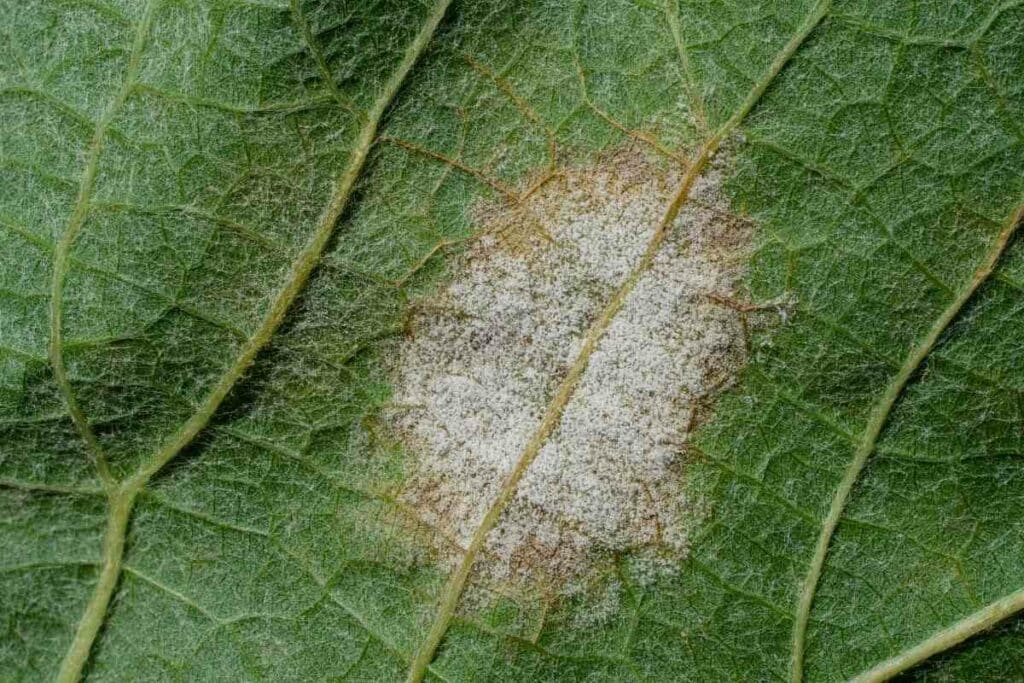
These are usually associated with humid conditions and overwatering.
Here are some key diseases to look out for:
- Powdery mildew: this fungal condition affects the foliage of the vine producing powdery white spots and yellowing of the leaves.
- Alternaria leaf blight: this fungal disease causes the small browny-yellow spots to form on the leaves, often associated with a green or yellow halo, it progresses rapidly to large and coalescing lesions, which become necrotic with curling of the leaf.
- Scab: this is a fungal condition that produces lesions on the fruit and leaves.
Pests will find patola fruit just as tasty as you would, so be vigilant for sap-suckers like aphids and mealybugs, burrowing species like the western spotted cucumber beetle, and, of course, your local slugs!
Spraying down your plants with Neem oil, garlic juice, or inviting some friendly pest predators like wasps or ducks, may help to keep things under control.
Harvesting your Patola
When you harvest Patola depends on what you will use it for.
If you want to eat the gourds, picking them early on will encourage further fruit to develop.
Harvesting Patola to eat
Patola has a 60 to 70-day growing period.
Pick the gourds young and soft for eating or you may find that you have candidates for loofah as they become tough and fibrous.
Harvesting Patola as a body sponge
To use Patola as a sponge, simply leave the fruit on the vine and allow its green color to fade.
When the fruit is dried and fibrous, peel off the skin and you should have a ready-made loofah sponge!
Patola recipe ideas
Like zucchini, squash and other popular gourds, Patola is a nutritious food.
Understandably, it has a lot of dietary fiber, but also has vitamins and minerals that include:
- Iron
- Magnesium
- Riboflavin
- Zinc
- Thiamine
- Vitamins A and C
Eat your Patola raw in salads in place of cucumber or cook it as you would okra or zucchini
Here are some delicious Patola recipes for you to try:
- Stir-Fried Patola with Eggs
- Goan Sauteed Ridge Gourd Recipe
- Luffa and Shrimp curry
Rounding up
Patola is a productive and sustainable plant that would be ideal for any gardener who is looking to become self-sufficient.
Not only does it provide you with delicious meals, you also save dollars on what would be an expensive personal care product.
